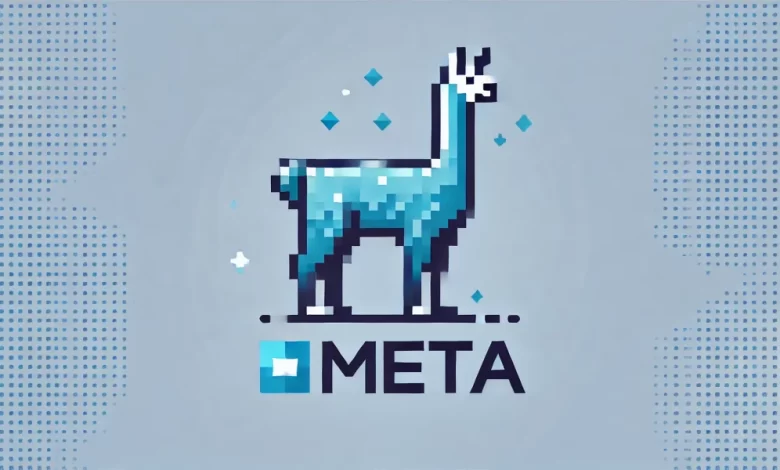The Most Powerful Open Source LLM Yet: Meta LLAMA 3.1-405B

Memory requirements for Lama 3.1-405B
Running Llama 3.1-405B requires significant memory and compute resources:
- GPU memory: The 405B model can use up to 80 GB of GPU memory per A100 GPU for efficient inference. Using Tensor Parallelism, the load can be distributed across multiple GPUs.
- RAM: A minimum of 512 GB system RAM is recommended to handle the model’s memory footprint and ensure smooth data processing.
- Storage: Make sure you have several terabytes of SSD storage for model weights and associated data sets. Fast SSDs are critical for reducing data access times during training and inference (Lama Ai model) (Groq).
Inference optimization techniques for Llama 3.1-405B
Efficiently running a 405B parameter model like Llama 3.1 requires several optimization techniques. Here are the main methods to ensure effective inference:
a) Quantization: Quantization involves reducing the precision of the model’s weights, which reduces memory usage and improves inference speed without significantly sacrificing accuracy. Llama 3.1 supports quantization up to FP8 or even lower precisions using techniques such as QLoRA (Quantized Low-Rank Adaptation) to optimize performance on GPUs.
Sample code:
from transformers import AutoModelForCausalLM, AutoTokenizer, BitsAndBytesConfig model_name = "meta-llama/Meta-Llama-3.1-405B" bnb_config = BitsAndBytesConfig( load_in_8bit=True, # Change to load_in_4bit for 4-bit precision bnb_8bit_quant_type="fp8", bnb_8bit_compute_dtype=torch.float16, ) model = AutoModelForCausalLM.from_pretrained( model_name, quantization_config=bnb_config, device_map="auto" ) tokenizer = AutoTokenizer.from_pretrained(model_name)
b) Tensor parallelism: Tensor parallelism involves splitting the layers of the model across multiple GPUs to parallelize computations. This is especially useful for large models such as Llama 3.1, allowing efficient use of resources.
Sample code:
from transformers import AutoModelForCausalLM, AutoTokenizer, pipeline
model_name = "meta-llama/Meta-Llama-3.1-405B"
model = AutoModelForCausalLM.from_pretrained(
model_name,
device_map="auto",
torch_dtype=torch.float16
)
tokenizer = AutoTokenizer.from_pretrained(model_name)
nlp = pipeline("text-generation", model=model, tokenizer=tokenizer, device=0)
c) KV-Cache Optimization: Efficient management of the key-value cache (KV) is crucial for handling long contexts. Llama 3.1 supports extended context lengths, which can be managed efficiently using optimized KV caching techniques. Sample code:
# Ensure you have sufficient GPU memory to handle extended context lengths output = model.generate( input_ids, max_length=4096, # Increase based on your context length requirement use_cache=True )
Implementation strategies
Implementing Llama 3.1-405B requires careful consideration of hardware resources. Here are some options:
a) Cloud-based deployment: Leverage high-memory GPU instances from cloud providers such as AWS (P4d instances) or Google Cloud (TPU v4).
Sample code:
# Example setup for AWS
import boto3
ec2 = boto3.resource('ec2')
instance = ec2.create_instances(
ImageId='ami-0c55b159cbfafe1f0', # Deep Learning AMI
InstanceType='p4d.24xlarge',
MinCount=1,
MaxCount=1
)
b) On-site implementation: For organizations with high-performance computing capabilities, deploying Llama 3.1 on-premise provides greater control and potentially lower long-term costs.
Example setup:
# Example setup for on-premises deployment # Ensure you have multiple high-performance GPUs, like NVIDIA A100 or H100 pip install transformers pip install torch # Ensure CUDA is enabled
c) Distributed Inference: For larger deployments, consider distributing the model across multiple nodes.
Sample code:
# Using Hugging Face's accelerate library from accelerate import Accelerator accelerator = Accelerator() model, tokenizer = accelerator.prepare(model, tokenizer)
Usage scenarios and applications
The power and flexibility of Llama 3.1-405B offer countless possibilities:
a) Synthetic data generation: Generate high-quality domain-specific data for training smaller models.
Example use case:
from transformers import pipeline
generator = pipeline("text-generation", model=model, tokenizer=tokenizer)
synthetic_data = generator("Generate financial reports for Q1 2023", max_length=200)
b) Knowledge distillation: Transfer the knowledge of the 405B model to smaller, more usable models.
Sample code:
# Use distillation techniques from Hugging Face
from transformers import DistillationTrainer, DistillationTrainingArguments
training_args = DistillationTrainingArguments(
output_dir="./distilled_model",
per_device_train_batch_size=2,
num_train_epochs=3,
logging_dir="./logs",
)
trainer = DistillationTrainer(
teacher_model=model,
student_model=smaller_model,
args=training_args,
train_dataset=train_dataset,
eval_dataset=eval_dataset,
)
trainer.train()
c) Domain-specific refinement: Adapt the model for specialized tasks or industries.
Sample code:
from transformers import Trainer, TrainingArguments
training_args = TrainingArguments(
output_dir="./domain_specific_model",
per_device_train_batch_size=1,
num_train_epochs=3,
)
trainer = Trainer(
model=model,
args=training_args,
train_dataset=train_dataset,
eval_dataset=eval_dataset,
)
trainer.train()
These techniques and strategies will help you unleash the full potential of Llama 3.1-405B and ensure efficient, scalable, and specialized AI applications.



